How to Find High-Quality Matcha in Tokyo
Posted by Grace on June 22, 2025
Contents
- What Makes Matcha “High Quality”?
- Where to Buy High-Quality Matcha in Tokyo
- Where to Taste Matcha in Tokyo
- 2 Ways to Prepare Matcha
What Makes Matcha “High Quality”?
Color
Look for a vibrant, bright green—not dull, yellowish, or brownish. A deep emerald color indicates the leaves were shade-grown and freshly ground.
Smell
High-quality matcha smells fresh, grassy, and slightly sweet. If it smells musty, fishy, or overly bitter, walk away.
Texture
It should feel like silky baby powder. If it’s gritty or clumpy, it’s either old or poorly milled.
Taste
Premium matcha tastes smooth, creamy, and umami-rich. It should not be harsh or astringent, even when unsweetened.
Purity
Matcha should be free of additives, preservatives, and artificial flavors. It should be made from organic, shade-grown tea leaves.
Be cautious of matcha sold in some supermarkets or small coffee shops. They may claim it’s pure matcha, but it’s often mixed with other ingredients, such as sugar and thickeners (like 增稠剂 / しょくちゅうしょく).
Where to Buy High-Quality Matcha in Tokyo
1. Ippodo Tea (一保堂)
Ippodo is one of the most respected tea makers in Japan, with over 300 years of history. Known for its premium, traditionally prepared matcha, Ippodo carefully sources tea leaves from Kyoto and grinds them fresh.
Their Tokyo store in Takashimaya (Shinjuku) offers a limited daily supply of matcha, and it often sells out early. Each customer is allowed to purchase only one tin, which ensures freshness and fairness.
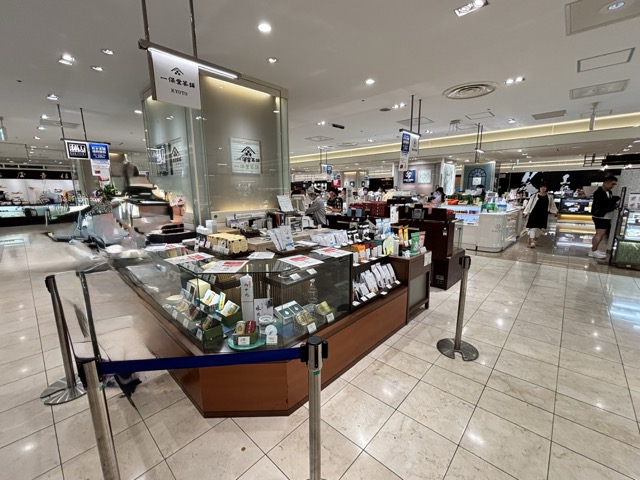 Ippodo Tea in Takashimaya Shinjuku
Ippodo Tea in Takashimaya Shinjuku
Ippodo Matcha comes in 7 different grades, from 1 to 7. The higher the grade, the richer the flavor. Grade 1 is the highest and most expensive, and it tends to sell out the fastest. Grade 7 is the lowest grade and also the most affordable.
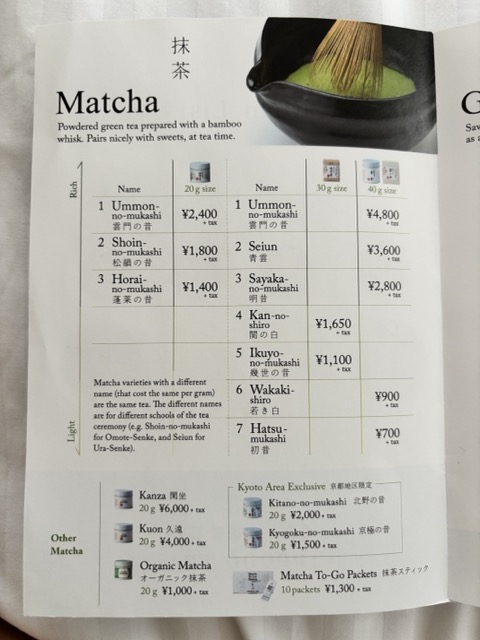
We lived close to Takashimaya, which has an Ippodo Tea store in the B1F basement. It opens at 10:30 a.m. We often arrived by 10:15 to line up. Usually, a staff member directs Ippodo customers to a separate line. Then they hand out tickets. You can only buy one matcha per person.
2. Supermarkets
There are also many different kinds of matcha available in supermarkets. You have to be careful when choosing the right one. They may not be ceremonial-grade or high-quality matcha, but if you're using it for baking, lattes, or simply looking to save money, they can still be a decent option.
Good Matcha Examples
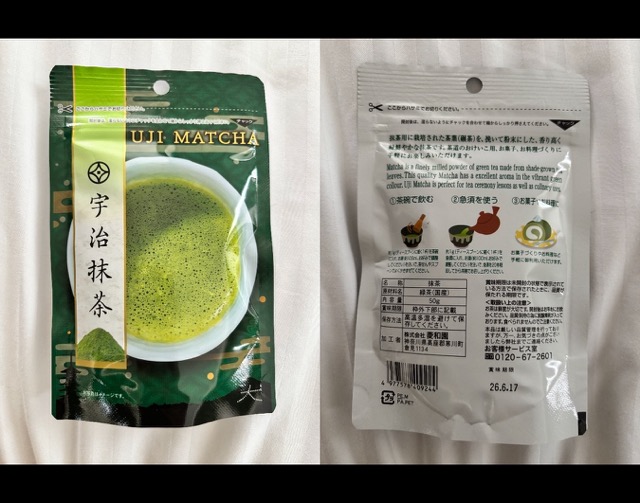 Uji Matcha I found in the supermarket with pure matcha and no additives
Uji Matcha I found in the supermarket with pure matcha and no additives
Bad Matcha Examples
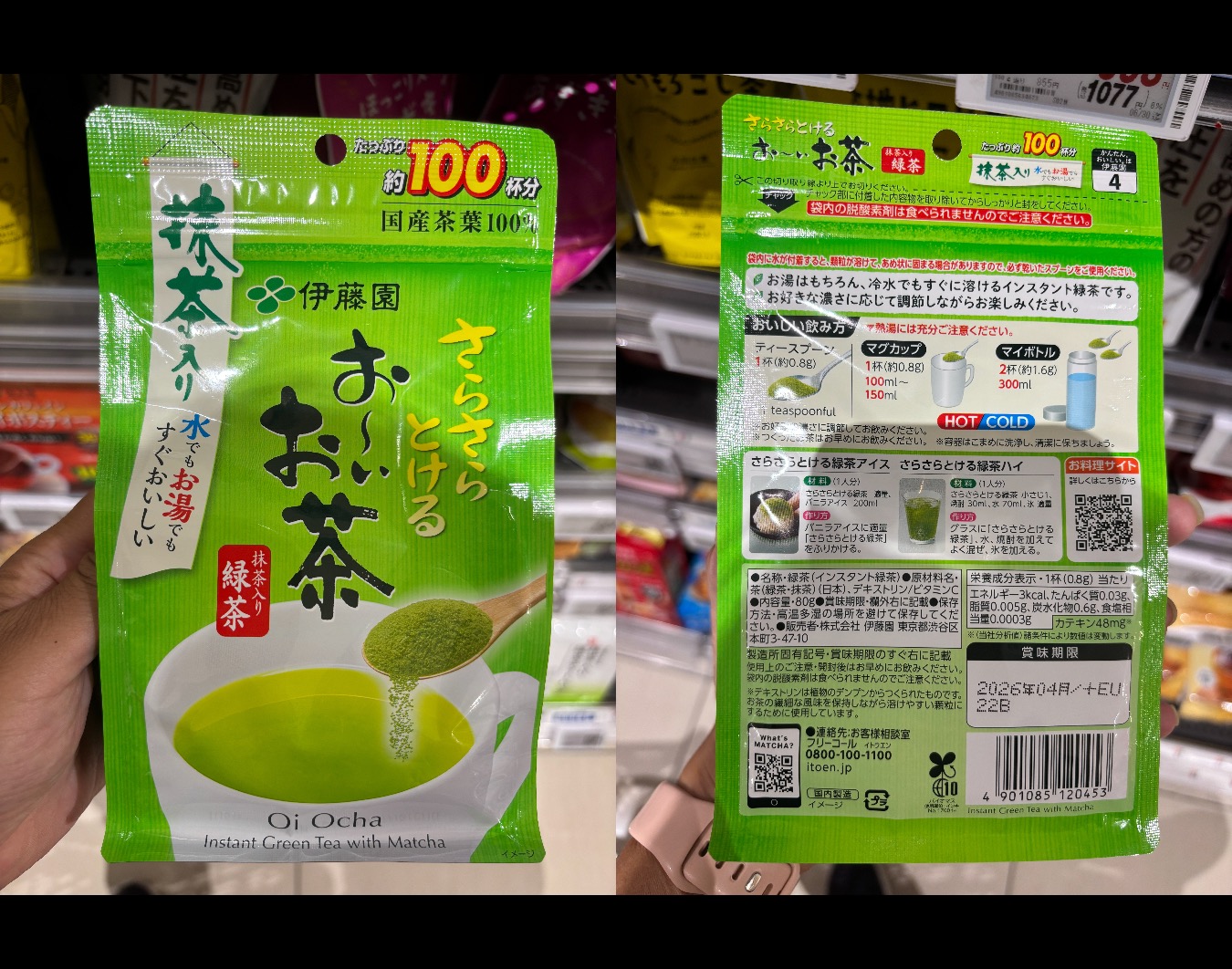 Ito En Oi Ocha Instant Green Tea with Matcha (さらさらとけるお~いお茶)
Ito En Oi Ocha Instant Green Tea with Matcha (さらさらとけるお~いお茶)
 Bad Matcha I found in the supermarket with additives and artificial flavors
Bad Matcha I found in the supermarket with additives and artificial flavors
Where to Taste Matcha in Tokyo
1. Jugetsudo Tea Shop & Cafe, Ginza (寿月堂 銀座歌舞伎座店)
Jugetsudo is a high-end tea shop by Maruyama Nori, a seaweed company with deep roots in traditional Japanese ingredients. This cafe is located on an upper floor of the Kabukiza Tower in Ginza, next to the Kabuki Theater. Although the building looks ordinary from the outside, the inside reveals a hidden tea oasis with a lush rooftop garden and serene interior.
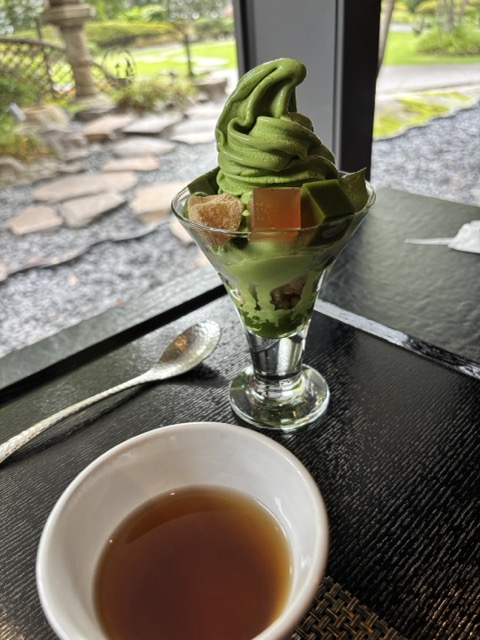 Matcha parfait that my family had at Jugetsudo Tea Shop & Cafe, Ginza
Matcha parfait that my family had at Jugetsudo Tea Shop & Cafe, Ginza
The menu includes ceremonial-grade matcha, matcha ice cream, and seasonal desserts like shaved ice. Everything is beautifully prepared and served in a peaceful setting that blends modern elegance with traditional Japanese aesthetics.
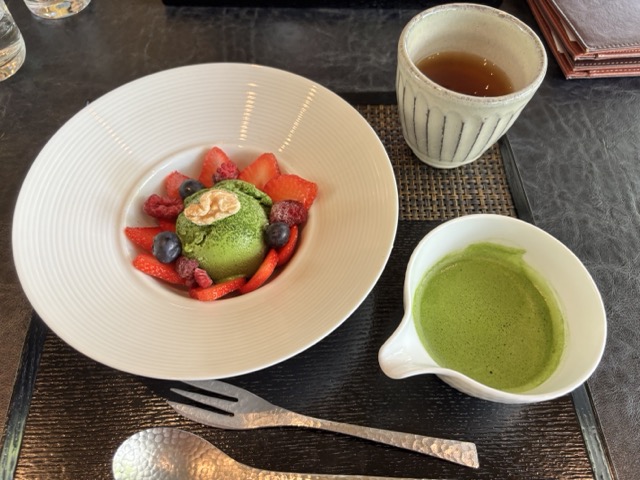 Matcha affogato that I had at Jugetsudo Tea Shop & Cafe, Ginza
Matcha affogato that I had at Jugetsudo Tea Shop & Cafe, Ginza
A Japanese sushi chef recommended this place to us. We would never have discovered it otherwise—it’s inside a building that doesn’t look appealing from the outside. It’s located on an upper floor with a beautiful green garden.
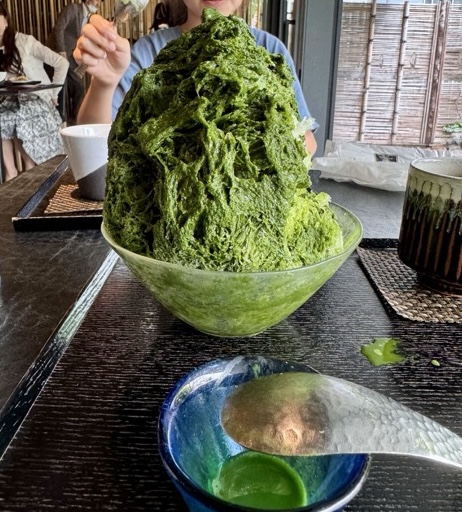 Matcha shaved ice that my family had at Jugetsudo Tea Shop & Cafe, Ginza
Matcha shaved ice that my family had at Jugetsudo Tea Shop & Cafe, Ginza
The matcha, ice cream, and shaved ice are amazing. The environment is serene and elegant.
2. The Matcha Tokyo
The Matcha Tokyo is a sleek, contemporary chain that focuses on organic matcha drinks made fresh to order. There’s no seating area, but the preparation is part of the experience: the server uses a traditional chasen (bamboo whisk) to make the matcha in front of you.
Their menu includes straight matcha, matcha lattes, and seasonal variations. Great for a quick and authentic matcha fix while exploring the city.
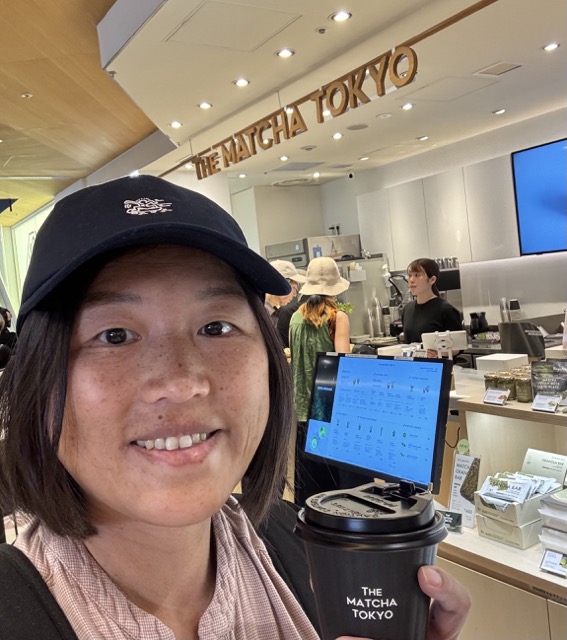 Me had pure matcha at The Matcha Tokyo
Me had pure matcha at The Matcha Tokyo
You can also find them in other countries, like China.
3. Tea Ceremonies
Traditional tea ceremonies are another great way to experience high-quality matcha. I had been to a few in Tokyo.
Rakuu-tei Tea House (楽羽亭 茶室)
Inside Shinjuku Gyoen National Garden, the Rakuu-tei Tea House offers a peaceful tea ceremony experience. You can choose between hot or cold matcha, or opt for a matcha latte. It is freshly whisked for you by staff dressed in traditional attire.
The tea house sits beside a koi pond and is surrounded by seasonal flowers and trees, creating a quiet and meditative atmosphere. It’s a wonderful place to enjoy high-quality matcha while experiencing Japanese tea culture in its traditional form.
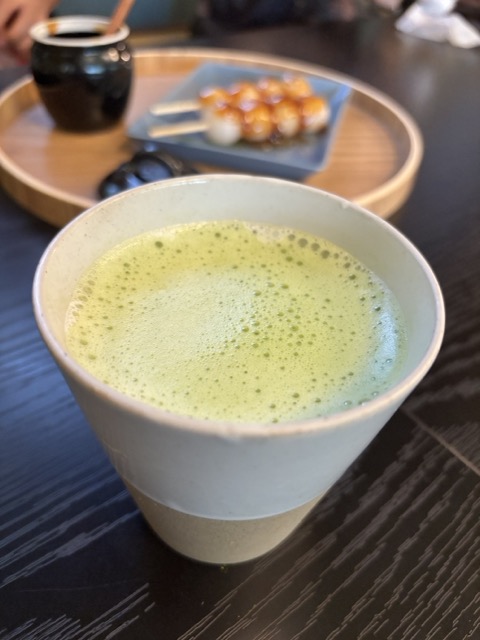 Matcha Latte at Rakuu-tei Tea House
Matcha Latte at Rakuu-tei Tea House
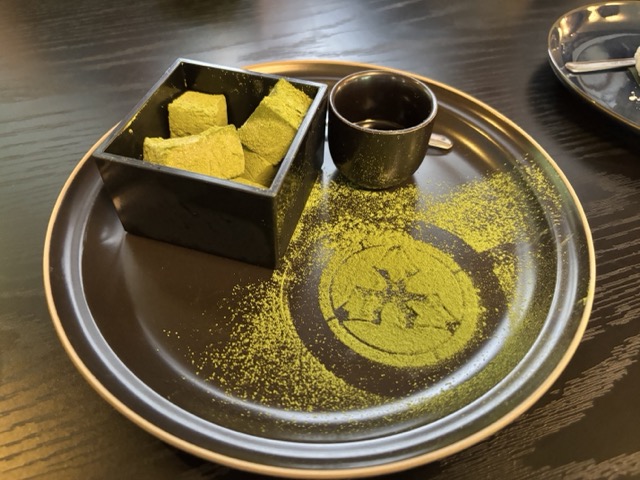 I had Matcha warabimochi (抹茶わらび餅) at Rakuu-tei Tea House. The warabimochi was soft, smooth, and cold—very refreshing.
I had Matcha warabimochi (抹茶わらび餅) at Rakuu-tei Tea House. The warabimochi was soft, smooth, and cold—very refreshing.
Kyūkōan Tea House at Hokokuji Temple, Kamakura (休耕庵・報国寺)
Kyūkōan is a traditional tea house nestled inside Hokokuji Temple, known for its serene bamboo grove in Kamakura (鎌倉). Located in a quiet corner of the temple grounds, the tea house is surrounded by tall bamboo and classic Japanese architecture, creating a peaceful and almost otherworldly atmosphere.
The tea ceremony experience includes high-quality matcha served with a few small traditional cookies, which provide a sweet contrast to the subtle bitterness of the tea. You can purchase a combined ticket that includes temple admission and the matcha experience. It’s a bit more expensive than general entry, but well worth it for the tranquility and cultural immersion.
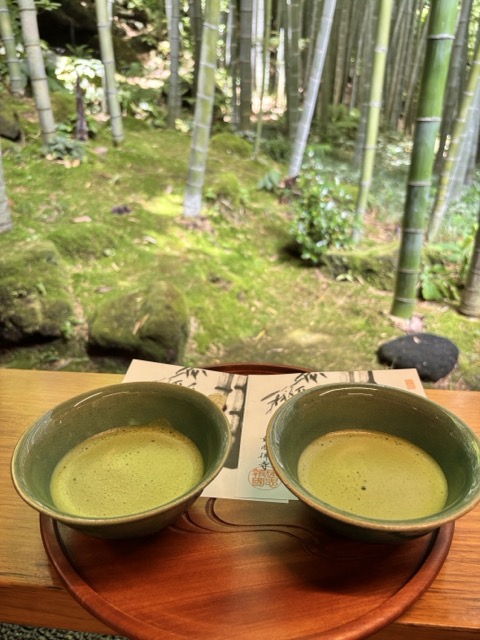 Matcha at Kyūkōan Tea House inside Hokokuji Temple in Kamakura
Matcha at Kyūkōan Tea House inside Hokokuji Temple in Kamakura
2 Ways to Prepare Matcha
Usucha and koicha are two distinct styles of preparing matcha, the powdered green tea central to Japanese tea ceremonies.
Usucha, meaning “thin tea,” is lighter and frothier—ideal for casual enjoyment. Koicha, or “thick tea,” is a richer, more concentrated brew traditionally reserved for formal occasions.
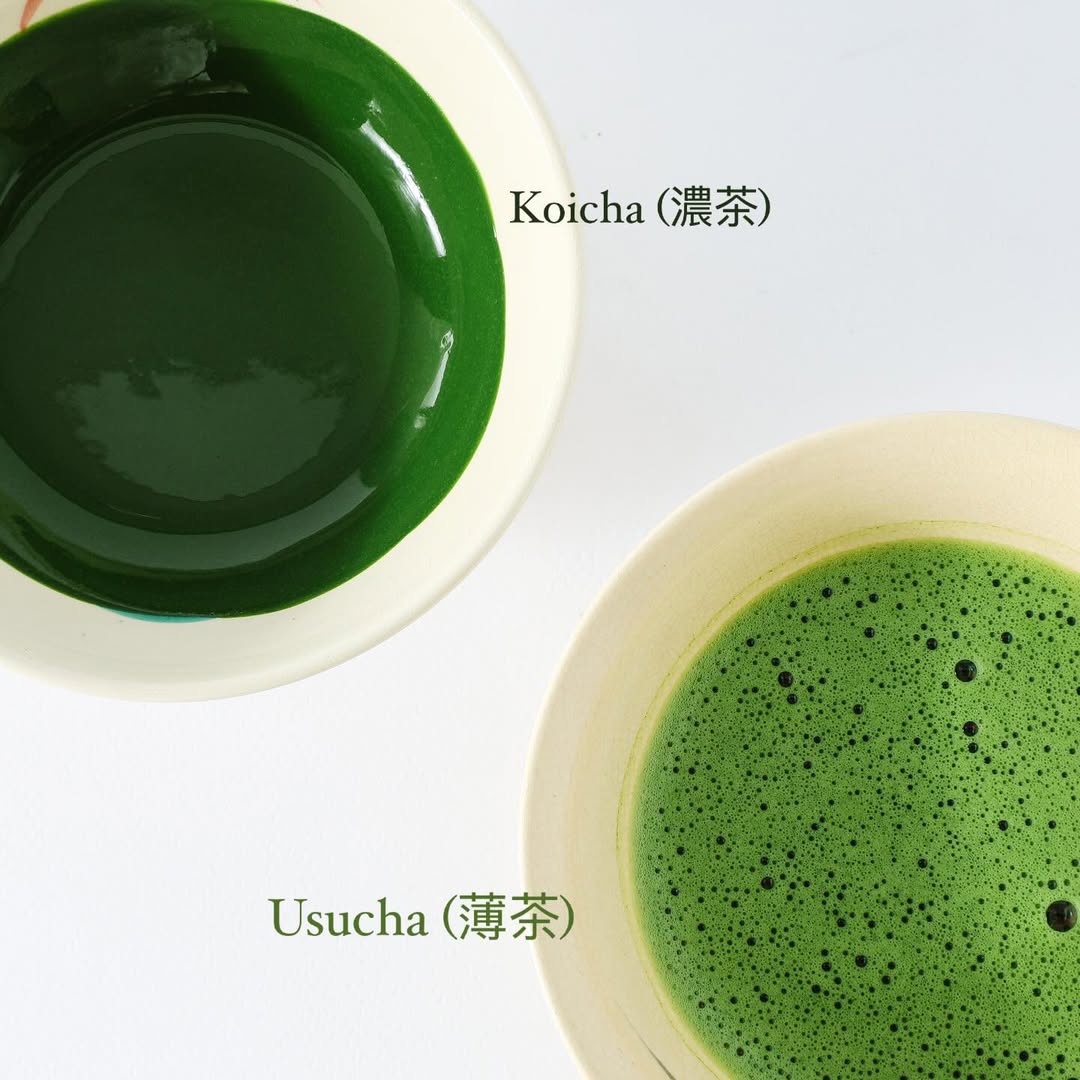
Usucha / Thin Tea (薄茶)
- Preparation: Whisked vigorously in a quick “W” or “M” motion to create a frothy, light consistency.
- Consistency: Thin and watery, similar to strong coffee or espresso.
- Flavor: Light, delicate, and balanced, with a slight sweetness and gentle umami.
- Occasion: Common for casual enjoyment and everyday drinking.
Koicha / Thick Tea (濃茶)
- Preparation: Slowly stirred or gently kneaded to form a thick, smooth paste.
- Consistency: Thick and syrupy, almost like melted chocolate.
- Flavor: Rich and intense, with a strong umami flavor and a hint of bitterness.
- Occasion: Traditionally reserved for formal tea ceremonies.




